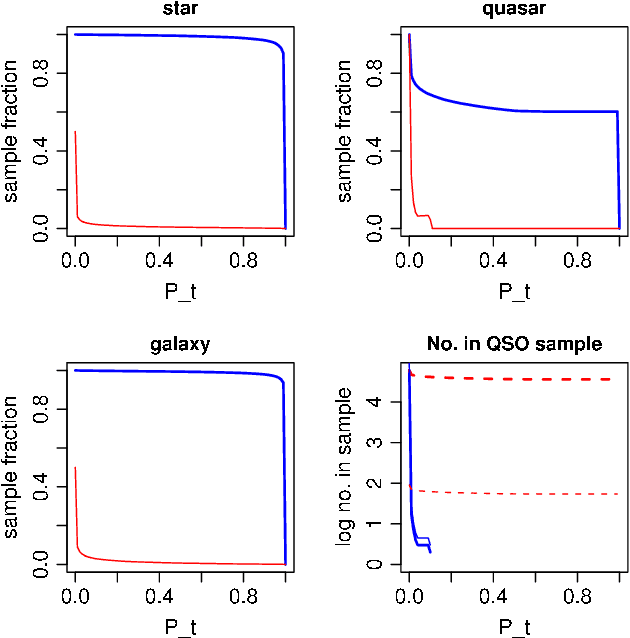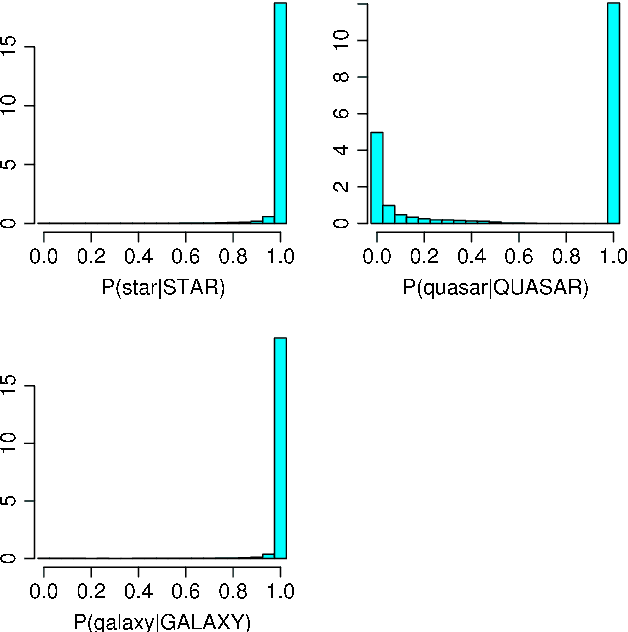K. W. Smith
MPIA, Heidelberg
Finding rare objects and building pure samples: Probabilistic quasar classification from low resolution Gaia spectra
Sep 19, 2008

Abstract:We develop and demonstrate a probabilistic method for classifying rare objects in surveys with the particular goal of building very pure samples. It works by modifying the output probabilities from a classifier so as to accommodate our expectation (priors) concerning the relative frequencies of different classes of objects. We demonstrate our method using the Discrete Source Classifier, a supervised classifier currently based on Support Vector Machines, which we are developing in preparation for the Gaia data analysis. DSC classifies objects using their very low resolution optical spectra. We look in detail at the problem of quasar classification, because identification of a pure quasar sample is necessary to define the Gaia astrometric reference frame. By varying a posterior probability threshold in DSC we can trade off sample completeness and contamination. We show, using our simulated data, that it is possible to achieve a pure sample of quasars (upper limit on contamination of 1 in 40,000) with a completeness of 65% at magnitudes of G=18.5, and 50% at G=20.0, even when quasars have a frequency of only 1 in every 2000 objects. The star sample completeness is simultaneously 99% with a contamination of 0.7%. Including parallax and proper motion in the classifier barely changes the results. We further show that not accounting for class priors in the target population leads to serious misclassifications and poor predictions for sample completeness and contamination. (Truncated)
* MNRAS accepted
 Add to Chrome
Add to Chrome Add to Firefox
Add to Firefox Add to Edge
Add to Edge